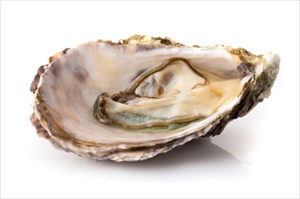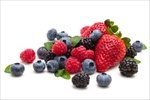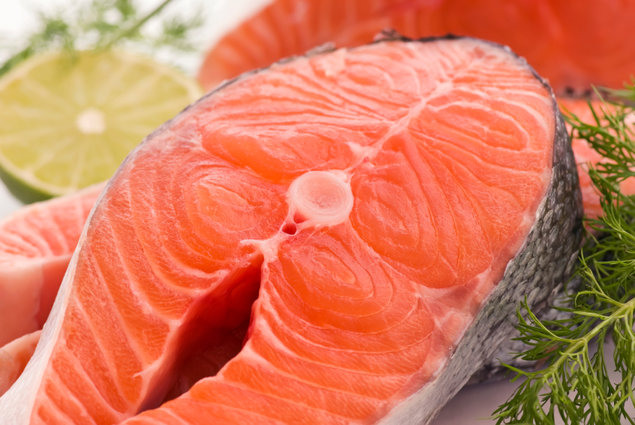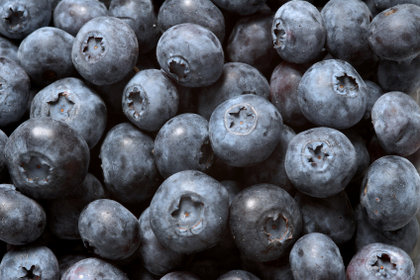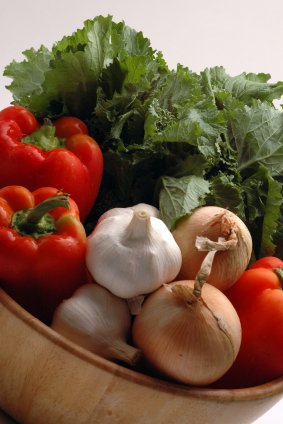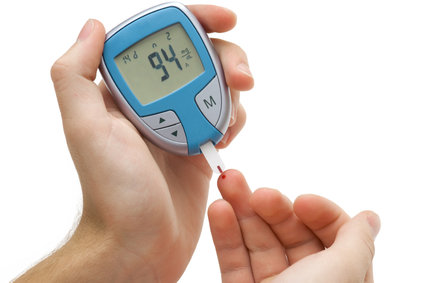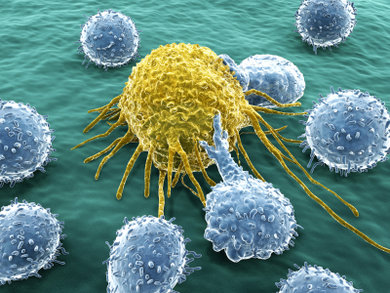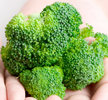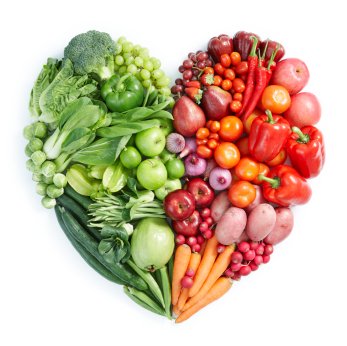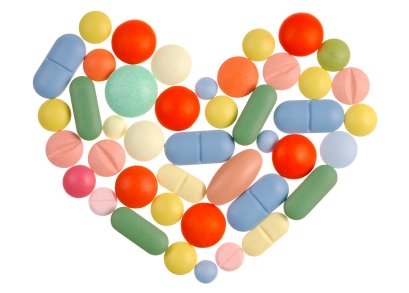The Anti-Inflammatory Diet – Your Ticket to A Healthier You with the Anti-inflammatory Basics
Anti-inflammatory Diet Basics - What is Inflammation and Why we need it?
Not all inflammation is bad!
Inflammation is a physiological process that has a protective role in triggering a healthy immune response to assaults on the body whether from physical injury, infection, toxic agents, damaged cells or other reasons.
For example, when you cut your finger, the wound and immediate area may become hot, red, swollen and painful. This is a sign that your immune system, namely through the activity of white blood cells that migrate to the location of the trauma, has mobilized. The blood brings oxygen and nutrients to the damaged tissue.
… Inflammation, in this case, is a good thing and an essential first step in the healing process.
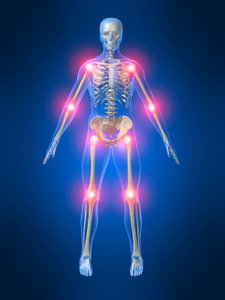
Anti-inflammatory Diet Basics - When is inflammation bad?
The problem is when
- inflammation becomes chronic and healing does not occur; or
- the same inflammatory action happens repeatedly preventing healing.
There are several reasons why.
It may be the result of an unhealthy or malfunctioning immune response, as in the case of auto-immune diseases or an allergic reaction when the immune cells attack healthy tissue for seemingly no reason other than mistaken identity. In autoimmunity the immune cells perceive the harmless allergens or the body’s own cells as dangerous and, accordingly, attack. The result is inflammation.
Alternatively, the assault, whether by toxins, infection or trauma, is repeated and the body is never allowed to heal properly before another insult occurs. A permanent inflammatory situation results. This can provoke serious health conditions down the road like heart disease, arthritis, cancer or emphysema.
This last is the case when smokers or second hand smokers inhale the same carcinogenic haze over and over. In the case of lung tissue and cigarette smoke, the initial result is altered lung tissue, progressing over the years to emphysema possibly and over decades to cancer.
Anti-inflammatory Diet Basics - How Diet can play a role in reducing inflammation?
Eating is something you do routinely - chronically, if you will.
It can have both an immediate and long term effect on your body including the immune system and its response to external and internal assaults; whether these arise from infection; viruses; physical trauma; toxins like heavy metals, pharmaceutical drugs or excess glucose; or the byproducts of routine metabolism that an overworked and under functioning liver cannot eliminate.
Along with the air you breath, food provides the raw materials to build as well as fuel your cells. No wonder that food, whether as part of an inflammatory or anti-inflammatory diet, can have a fundamental effect on how your immune cells respond to common inflammatory promoters all around us.
Diet can be key in preventing and managing inflammation. The advantage of diet, especially an anti-inflammatory diet, is that it can counter some of these inflammatory triggers. By contrast, the wrong diet can promote inflammation. The choice is yours.
Anti-inflammatory Diet Basics – The limits of Anti-inflammatory Drugs Versus the Benefits of an Anti-inflammatory Diet
There are many anti-inflammatory drugs on the market. Non-steroidal anti-inflammatories (NSAIDS) include ibuprofen, aspirin and COX II inhibitors. Corticosteroids simulate the anti-inflammatory effects of the hormone cortisol. Both can help reduce the symptoms of inflammation and give the body a chance to heal itself.
However, NSAIDs' and steroids’ usefulness is limited. First, they deal with the symptoms of inflammation, not its underlying causes. Second, they can have serious side effects, especially when used long term. NSAIDS can thin blood and cause bleeding abnormalities as well as affect the integrity of the digestive tract. Cox II inhibitors can promote clotting and increase risk for heart attack and stroke. Corticosteroids’ side effects include blood sugar disruption and inhibition of a person’s innate cortisol production.
Anti-inflammatory food, by contrast, can deal with the root causes of inflammation. The diverse nutrients in whole foods can, not only reduce inflammation, but support and strengthen organ systems that ensure good health generally. Another advantage of anti-inflammatory foods over anti-inflammatory drugs is that good food seldom has negative side effects; whole foods contain a multitude of supportive nutrients that can cushion the effects of any one nutrient - not the case with pharmaceutical drugs whose active ingredients are often provided in isolation in doses not found in nature. Side effects, as warnings on drug packages attest, can be extreme.
The result of anti-inflammatory foods and an anti-inflammatory diet generally is that they can eliminate the causes of the inflammatory response; not just mask symptoms. When well crafted, an anti-inflammatory diet can help prevent manage and, in cases, reverse many inflammatory conditions. It follows that an anti-inflammatory diet is key to dealing effectively and for the long term with inflammatory health conditions.
... Unfortunately, the typical western diet is an inflammatory one.
Anti-inflammatory Diet Basics – Why controlling inflammation is important for your health?
Inflammation, if uncontrolled, has a role in the cause and development of many health conditions.
Most of these conditions are the chronic ones in Western society especially as we age. Recent research on inflammation has made scientists view certain diseases in a new light and see them as inflammatory in nature or exacerbated by excess inflammation.
This is the case with atherosclerosis, a major cause of heart disease and stroke. Scientists today consider inflammation a key player in its development. This wasn’t always the case.
| Inflammatory Autoimmune Diseases
Autoimmune diseases are ones in which the body launches an immune attack on itself. The result is often inflammation, where the body’s own immune system damages or destroys tissue, sometimes irretrievably. Examples of auto immune conditions in which inflammatory damage plays a role is Type I diabetes; Hashimotos’ thyroiditis; Grave’s Disease, rheumatoid arthritis, vitiligo and multiple sclerosis. |
Previously, too much dietary fat was considered the main cause of heart disease and public health policy followed suit, recommending a shift to a low fat foods from the 1970’s onward– Scientists now see the explanation for atherosclerosis as more nuanced – and related to the inflammatory effect of saturated and hydrogenated fats in the body as well as the metabolism of essential fats a person consumes. …. In effect, too much saturated fat promotes inflammation and neutralizes the anti-inflammatory effects of essential fats (those Omega 3 and Omega 6’s)– not a good thing when trying to achieve an anti-inflammatory diet.
Anti-inflammatory Diet Basics – Inflammatory Diseases and Inflamatory Conditions
Many health conditions are associated with inflammation - whether as the primary or contributory cause to the inflammatory process or as a preventive to healing.
Accordingly, an anti-inflammatory diet can play a role in treatment , if not also prevention and cure, of the following inflamatory conditions:
- Atherosclerosis – inflammation of the blood vessels
- Arthritis including osteoarthritis and rheumatoid arthritis - inflammation of joints, ligaments and synovial fluid. In the case of rheumatoid arthritis, the inflammation can be body wide.
- Diabetes and Metabolic Syndrome – produces inflammation as a byproduct of high blood glucose levels and, in the case of Type II diabetes and metabolic syndrome, high insulin levels as well.
- Gingivitis or Periodontal Disease – inflammation of the gums
- Asthma – inflammation of the lungs
- Bronchitis – inflammation of the bronchia
- Diverticulitis – inflammation of the diverticular pockets that form in the lining of the large bowel
- Cancers including lung, esophageal, mouth, stomach, bowel, breast and prostate
- Colitis and Inflammatory Bowel Disease – inflammation of the colon and bowel
- Chron’s disease – inflammation of the bowel
- Alzheimer’s disease - inflammation in the brain
- Eczema – inflammation of the skin
- Abscess - inflamed fluid filled pockets of bacteria in the body
- Tissue injury including burns - inflammatory response to tissue damage
| Anti-inflammatory Diet Basics – Spotting Inflammation … in a word
The word “itis” stems from the Greek word for disease or inflammation. It follows, most health conditions ending in the letters “itis” relate to inflammatory conditions. |
Anti-inflammatory Diet Basics – A Little About Prostaglandins
Prostaglandins are hormone-like compounds synthesized, through a multi-stepped process, from Omega 6 and Omega 3 fatty acids. The key to remember is that there are several types of prostaglandins and they have profound effect on the development or containment of pain and inflammation in the body. For example, Type 1 and Type 3 prostaglandins are anti-inflammatory. By contrast, Type 2 prostaglandins are inflammatory.
It is for this reason that fish oil supplements containing Omega 3 EPA (Eicosapentaenoic Acid) and DPA (Docosapentaenoic Acid) are used for their anti-inflammatory properties in the treatment of heart disease, among other conditions.
Omega 6 oils form anti-inflammatory prostaglandins from linoleic acid as found in sesame, corn, canola, safflower, sun flower and other seeds. Linoleic acid ideally will turn into intermediary GLA (Gamma Linolenic Acid) and DGLA (Di-Homo-Gamma Linolenic Acid) and eventually the anti-inflammatory Type 3 prostaglandin.
| Tests for Inflammation and Inflammatory Markers
Several blood tests are used routinely to identify inflammation. None can tell you where the inflammation is located but can alert to the presence of inflammation in the body. The erythrocyte sedimentation rate (ESR) and C-reactive protein (CRP) tests are more common than the plasma viscosity (PV) test. High blood levels of insulin, glucose and leukocytes (a type of white blood cell) and tumor necrosis factor-alpha (TNF-a) are also associated with higher levels of inflammation. |
The problem is that, within the Omega 6 fatty acid group, there is something called arachidonic acid. In and of itself, arachidonic acid is harmless; however, in certain situations, it can prevent the production of anti-inflammatory prostaglandin Type 1 and instead promote the production of the inflammatory and pain causing Type 2 prostaglandin along with inflammatory leukotrienes produced in white blood cells.
How do you make sure this doesn’t happen? The answer is key to following an anti-inflammatory diet.
Anti-Inflammatory Diet Basics - Ensuring the Omega 6 oils you consume combat inflammation and don’t encourage it - Inhibit the production of Arichidonic Acid
There are several dietary measures you can take to ensure that the Omega 6s you consume, have an anti-inflammatory, as opposed to inflammatory, effect.
- Minimize your intake of saturated fat from animal products like meat and dairy. Too much saturated fat promotes development of arachidonic acid and the production of inflammatory Type 2 prostaglandins.
- Consume sufficient Vitamin E and quercetin-rich food – both inhibit the formation of potentially inflammatory Type 2 prostaglandins.
- Make licorice, turmeric, ginger, onion and garlic a regular part of your diet. They all discourage the effect of arachidonic acid and production of the inflammatory prostaglandins.
- Take the herbs boswellia, black willow or wintergreen to control inflammatory pain.
- Get enough Omega 3s in your diet with EPA and DHA from fish being the most effective source.
- Ensure your ratio of Omega 6 to Omega 3 intake approaches as much as possible 2:1. The typical Western diet has an Omega 6 to Omega 3 ratio of between 10:1 and 25:1, which promotes inflammation.
Another way to steer towards the anti-inflammatory prostaglandins with your Omega 6 consumption is to consume DGLA or GLA directly. This minimizes the risk that arachidonic acid will promote the production of inflammatory Type 2 prostaglandins. Borage (star flower), evening primrose and black current oils contain high levels of GLA. It is for this reason that they are used routinely to inhibit pain from inflammatory conditions like bursitis and osteoarthritis.
Pharmaceuticals Use the same Principals of an Anti-inflammatory Diet to Reduce inflammatory promoters
Several of the key anti-inflammatory medications follow the same principals of an anti-inflammatory diet to minimize the number of circulating inflammatory prostaglandins and luekotrienes. NSAIDS like ibuprofen, aspirin and COX-2 inhibitors like Vioxx do this by suppressing enzymes (namely COX-1 and COX 2 enzymes) that trigger the production of these inflammatory agents.
|
A diet Low in Arachidonic Acid - reduces inflammation and increases anti-inflammatory effect of fish oil supplements in patients with rheumatoid arthritis - A 2002 double blind randomized study of 60 rheumatoid arthritis sufferers found that those who followed an anti-inflammatory low arachidonic acid diet had less swelling and tenderness than those who followed a typical western diet. For those who also took fish oil supplements the improvement in symptoms was enhanced. Results appeared in the Jan issue of Rheumatology International. |
The downside of pharmaceutical anti-inflammatories, not present with food, are their side effects. In the case of aspirin and ibuprofen COX-1 blockers, the blood and stomach lining can thin, sometimes dangerously so; in the case of COX 2 blockers, like the pain reliever Vioxx, blood clots can occur and increase the risk of stroke or heart attack - These serious side effects of blood thickening were why Merck eventually withdraw Vioxx from the market.
Anti-inflammatory Diet Basics – What Dietary Factors Contribute to Inflammation?
Several dietary factors can cause or contribute to inflammation. Understanding these factors can help you design an effective anti-inflammatory diet.
Some dietary causes of inflammation are as follows:
- A deficit of anti-oxidants in relation to the number of oxidants or free radicals can lead to inflammation. Unstable oxidized molecules are called free radicals and, if not neutralized, can damage tissue and cause inflammation. A diverse array of physiological processes and products in which oxygen plays a role can cause free radicals including metabolism, external and internal toxins and excess exercise. These volatile oxidants need sufficient anti-oxidants to become safe and stable again. Antioxidants include, among others, Vitamins A, C, E, glutathione and flavonoids like quercetin. Minerals like zinc, manganese and selenium are necessary for many of these anti-oxidants to perform their function so you should ensure your diet is not micro-mineral deficient. For more on anti-oxidants and how you can ensure your diet is antioxidant rich, click on Orac Values or the Benefits of Vitamin C. For more on the Benefits of Zinc, press here.
- A lack of essential Omega 3 and Omega 6 fats and excess saturated and hydrogenated fats can lead to inflammation. Omega 3 and Omega 6 both prevent and reduce inflammation. For these reason they are used effectively to reduce the pain of arthritis, the incidence of arthrosclerosis, as well as the skin inflammation of eczema and other conditions. In addition, an excess of saturated and hydrogenated fats can diminish the anti-inflammatory effect of Omega 6 oils by the function of arachidonic acid. Scientists now think it is not just about how much of these essential fatty acids you consume to achieve their anti-inflammatory benefit, but the ratio between Omega 6 and Omega 3s matters – Experts consider the ideal ratio of Omega 6 to Omega 3 to be between 3: 1 and 2:1. For more on essential fats and how they can be a part of an anti-inflammatory diet, see the Benefits of Omega 3s. As well, learn about how improperly stored or processed Omega 3 and Omega 6 oils and nuts that become rancid can turn anti-inflammatory gold into inflammation promoting dirt.
- Allergies and food intolerances can cause inflammation. Poor diet, certain pharmaceuticals (including an excess of anti-inflammatory drugs or antibiotics) can damage the stomach’s lining. When the gut wall becomes porous, it permits the entry of undigested food molecules into the blood stream that the liver cannot properly metabolize. The result of this ‘leaky gut” can be allergic reactions involving the immune system, including inflammation. To resolve the problem, you must stop eating the irritant or allergen, at least until the gut lining heals. This is possible through the right combination of foods and nutrients.
- Poor liver detoxification can result in inflammation. When external or internal toxins overload the liver detoxification pathways, these damaging substances can build in the body and cause harm, including inflammation. The solution? Ensure your liver is in tip top shape by, first, avoiding toxins and allergy-provoking substances and, second, taking liver supportive nutrients like milk thistle and other anti-oxidants like vitamin C.
- Uncontrolled blood sugar and excess insulin have an inflammatory effect. An excess of glucose or insulin in the bloodstream can trigger inflammation. This can happen when (i) a person consumes too many refined carbohydrates or high glycemic foods; or (ii) when the body no longer responds to the existing insulin, which triggers the pancreas to release more insulin. Excess insulin can occur in uncontrolled Type II diabetes and metabolic syndrome, also called syndrome X. Inflammatory damage to blood vessels throughout the body can result. For more about selecting foods that have a low glycemic value as part of your anti-inflammatory diet, press here.
Anti-inflammatory Diet Basics – Anti-inflammatory Nutrients?
As part of any anti-inflammatory diet, there are several nutrients or foods that can play an important role in reducing out-of-control inflammation and get your body on a healthier road.
|
Quercetin is a bioflavonoid with anti-inflammatory effect. Some of the top quercetin containing foods by weight are apples, watercress, red onions, cranberries, sweet potato, kale, blueberries and tomatoes with organic tomatoes having 79% more than conventionally grown. When confronting inflammation aim to increase your intake of quercetin-rich fruits and vegetables. |
Anti-oxidants - As part of your anti-inflammatory diet, eat antioxidant rich foods including those containing Vitamins A, C and E as well as glutathione and, especially, the flavonoid quercetin. Together these antioxidant nutrients quench the myriad inflammatory free radicals that result from a wide range of causes like cigarette smoke, car exhaust, heavy metals, exercise, severe illness and even the process of digestion itself. Any activity in which oxygen is involved will create them. …. While we can’t escape free radicals, we can manage them and get the upper hand by consuming sufficient anti-oxidants.
That is the aim of the game, in fact, of any anti-inflammatory diet – consume enough anti-oxidant nutrients, whether through food or supplements, to neutralize the onslaught of anti-oxidants that are an inevitable part of living in the modern world . For more about the best Vitamin C foods and C’s anti-oxidant properties, press here.
Omega 3 Oils - Omega 3s are an important part of any anti-inflammatory diet, along with the other essential fatty acids, the Omega 6s. One problem with getting enough Omega 3 fats is that they are fragile and easily destroyed by food processing, storage and cooking techniques. For these reasons, the typical Western diet with its process-food dominant menu is chronically Omega 3-deficient but overly abundant in the heartier Omega 6s. Both Omega 3s and Omega 6s are essential in our diet but in a healthy ratio to each other.
Omega 3s are particularly beneficial for relief from inflammatory pain and swelling as well as speeding wound healing. In addition, Omega 3s aid the metabolism of the fat soluble vitamins including the anti-inflammatory anti-oxidants Vitamins E and A. Press here for more details about the benefits and sources of Omega 3 fats.
Fiber – Fiber is the indigestible part of plants. While there are many benefits to fiber including reducing transit time and lowering HDL cholesterol (the bad cholesterol), when it comes to your anti-inflammatory diet, it is fiber’s effects on blood sugar that makes it an anti-inflammatory nutrient.
Get more fiber by increasing your fruit, veg and whole grain intake. Generally, the less processed the food the better, when it comes to fiber. For example, skip the orange juice in favor of the orange; give a pass to the fiber-less meat on your plate and opt for fiber-rich beans, nuts and whole grains for your protein.
The US Government suggest you get at least 25 to 38 grams of fiber per day, although more is even better. The average American only gets 12 to 15 grams fiber daily; many Chinese consume more than 75 grams! Americans’ low fiber intake is one reason that the typical meat-heavy and vegetable and whole grain-light diet is inflammatory. To read more about how fiber affects blood sugar, read about low glycemic diets.
Probiotics – Your anti-inflammatory diet should ensure that healthy gut bacteria rule in the digestive track and that the pathogenic bacteria don’t get out of hand. The result of the latter situation is often inflammation leading to “leaky gut” - a permeable stomach lining. This, in turn, may leave a person susceptible to inflammatory allergic reactions. Taking a quality probiotic supplement to help restore the population of beneficial gut bacteria after a course of antibiotics or in order to eliminate an over-abundance of the bad guys is a good idea. Consuming yogurt containing live probiotic bacteria or other fermented foods with live bacteria like sauerkraut on a regular basis is another prudent piece of the anti-inflammatory diet puzzle.
Bioflavonoids – These are compounds found in fruits and vegetables that give them their bright color. As well as assisting in the function of anti-oxidant nutrients and collagen builders like Vitamin C, many bioflavonoids have anti-inflammatory properties. One of the most well-known anti-inflammatory bioflavonoids is quercetin, abundant in brightly colored fruits and vegetables including berries, red onions and green leafies. See box for good sources of quercetin.
Curcumin – Curcumin is the anti-inflammatory
ingredient in the Indian spice turmeric. Turmeric is an anti-inflammatory
staple of Ayurvedic medicine used to reduce
inflammation associated with arthritis, asthma, atherosclerosis and
cancer. Scientists have confirmed
that curcumin inhibits the production of
inflammatory prostaglandins and lessens the effect of nitric oxide, an
inflammatory oxidant produced in the
body. You can either take curcumin supplements or cook regularly with turmeric,
a common ingredient in Indian food. Boost tumeric's anti-oxidant effect by heating in oil with pepper.
Anti-inflammatory Diet Basics – Some Top Anti-inflammatory Foods
Fish Oil both via diet and supplements –The flesh and oil from cold water fish like tuna, sardines, anchovies and salmon are rich in EPA and DPA. Research shows that EPA is especially anti-inflammatory. Prefer wild salmon over farm raised because it is generally higher in Omega 3 content. You should aim to eat fish 3 times a week to get your Omega 3 input but be careful of the kind you eat, as mercury contamination is an issue, with some fish species including tuna. The US government advises children and pregnant women to limit the amount of tuna they eat due to the high mercury concentrations as well as avoid entirely some other fish. Press here to read what the US government recommends regarding fish and shellfish routinely contaminated with mercury.
Fish oil capsules can be the most convenient and least contaminated source of Omega 3 oils. Ensure that it is molecularly distilled so that it is mercury and contaminant free. Press here to read more about the Omega 3 properties of fish and fish oil.
Nuts and seeds and their oils - Flax, hemp and pumpkin seeds and their cold pressed oils are rich in Omega 3 oils and the precursors to EPA and DPA. They will eventually convert to Omega 3s in the body in the event that the pathways are not overloaded with an excess of Omega 6, or saturated or hydrogenated fats. See earlier discussion. Canola, sunflower and safflower oil are Omega 6 rich and will convert to anti-inflammatory products, provided the pathways are not overloaded with too much saturated or hydrogenated fats.
Garlic – is a part of the anti-inflammatory diet kitchen.
Fruit and Vegetables - these plant foods are chockablock with fiber, anti- oxidants, mineral cofactors needed for the anti-oxidants to function, and bioflavonoids that have anti-inflammatory properties. Aim for more than five servings each day of differently colored types and don’t forget the green leafies, in which we are often deficient. Good choices include carrots, peppers, broccoli, kale, squash, peas, apples, pears, plums, grapes and berries.
Ginger – is a potent anti-inflammatory food used for centuries for this purpose in Ayurvedic medicine. Its anti-inflammatory action reduces the production of inflammatory prostaglandins and thromboxanes.
Beans and whole grains - These nutrient dense complex carbohydrates are high in fiber and, therefore, low in glycemic load. When eaten in combination with a varied diet, they are a good source of high quality protein and a good protein alternative to inflammation-producing animal products.
|
Cancer Fighting |
Cancer Prevention |
Breast Cancer |
Lung Cancer |
Inflammation |
Antioxidants |
|
Vitamin C |
Magnesium |
Vitamin D |
Calcium |
Zinc |
Constipation |
Press here for more about inflammatory foods to avoid.
For more on anti-inflammatory Omega 3 and Omega 6 oils, read The Benefits of Omega 3s.
For more on the anti-inflammatory effects of Vitamin C, read The Benefits of Vitamin C.
For more on the anti-inflammatory effects of grapes, read Peel Me a Grape – Table Grapes and Their Role in a Heart Healthy Diet and Diet for High Blood Pressure.
For more about finding anti-inflammatory anti-oxidant rich food, read about ORAC Values.
For more about finding anti-inflammatory low glycemic foods, read about the Glycemic Index Food List.
Press here to read more about Cancer and Nutrition.
Click for more about Cancer Prevention Diets.
Press for insights into a Cancer Fighting Diet.
Press here for more about heart healthy diet fundamentals.
Press here for more about heart attack supplements.
Press here for more about high blood pressure supplements.
For more about figuring out the nutrient content of food, click on Reading Food Labels.
Click here to read timely news and information about nutrition and health on Healthy Diet Blog.
Click here to return to Healthy-Diet-Healthy-You Home.
